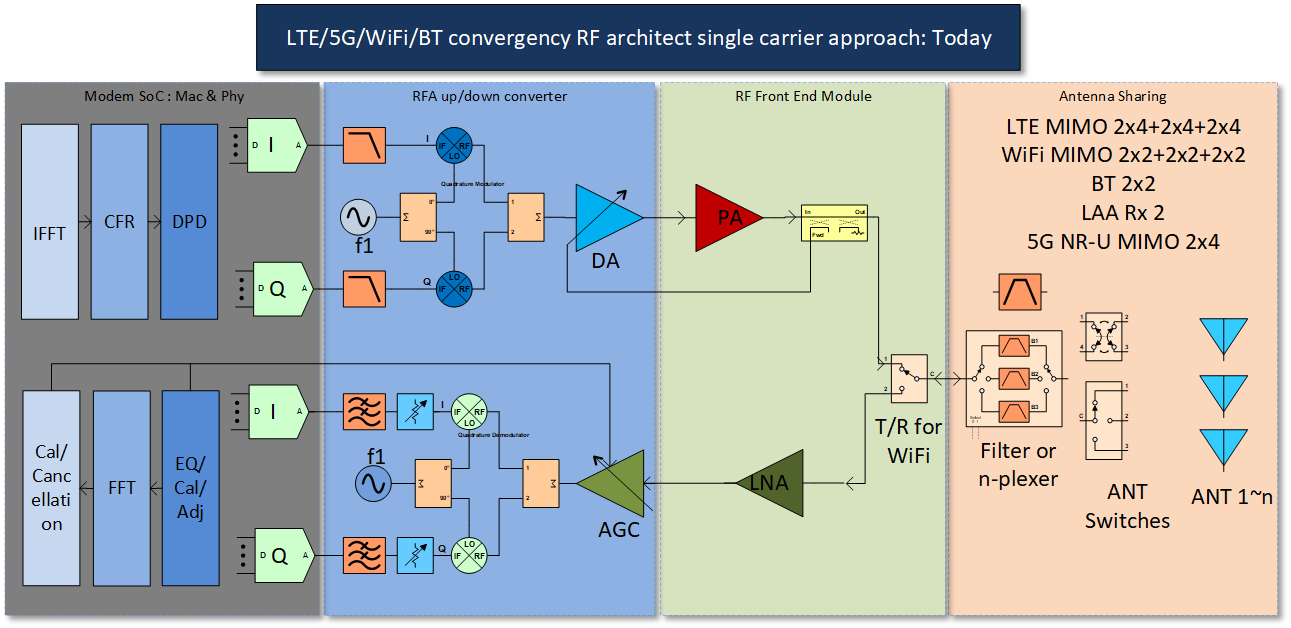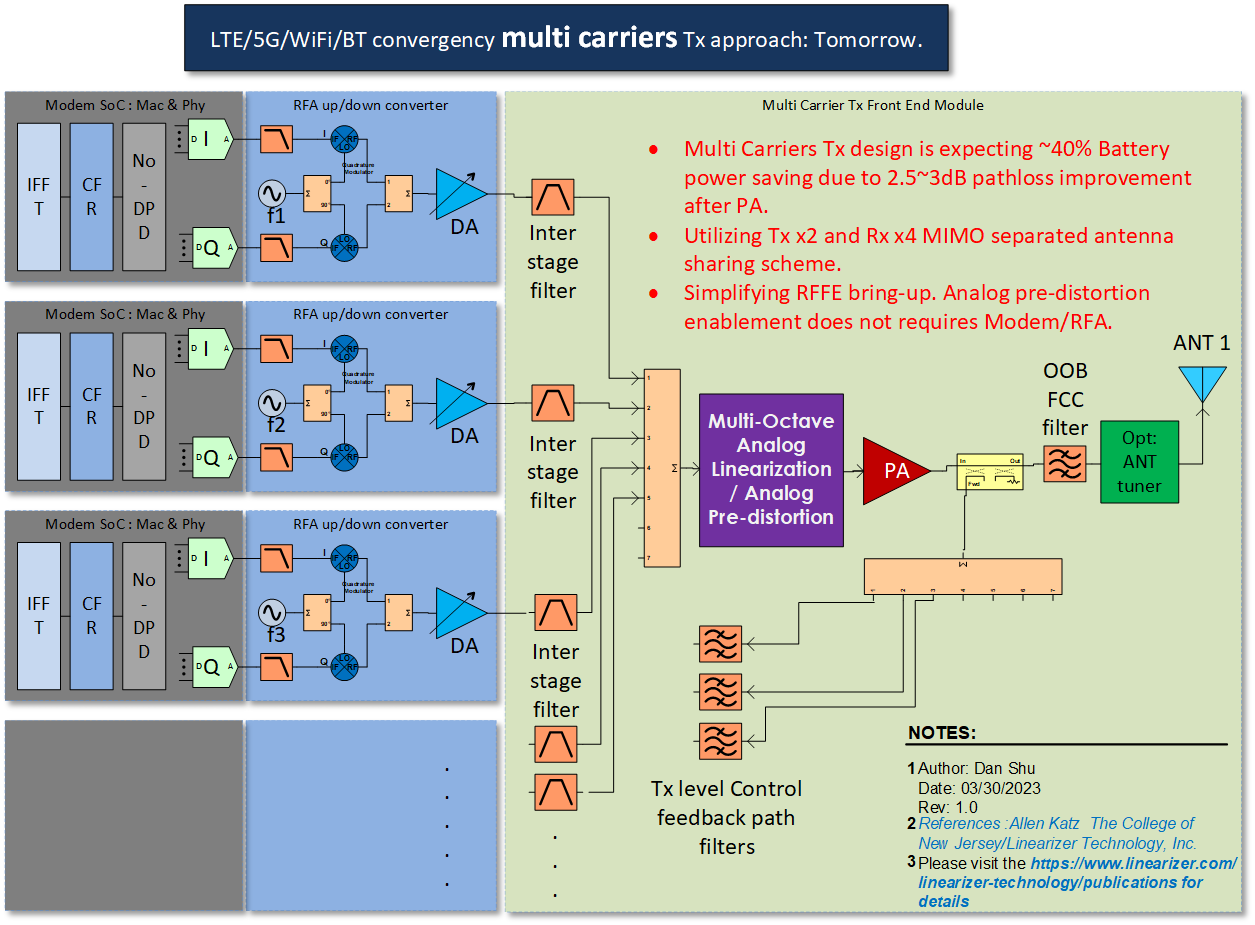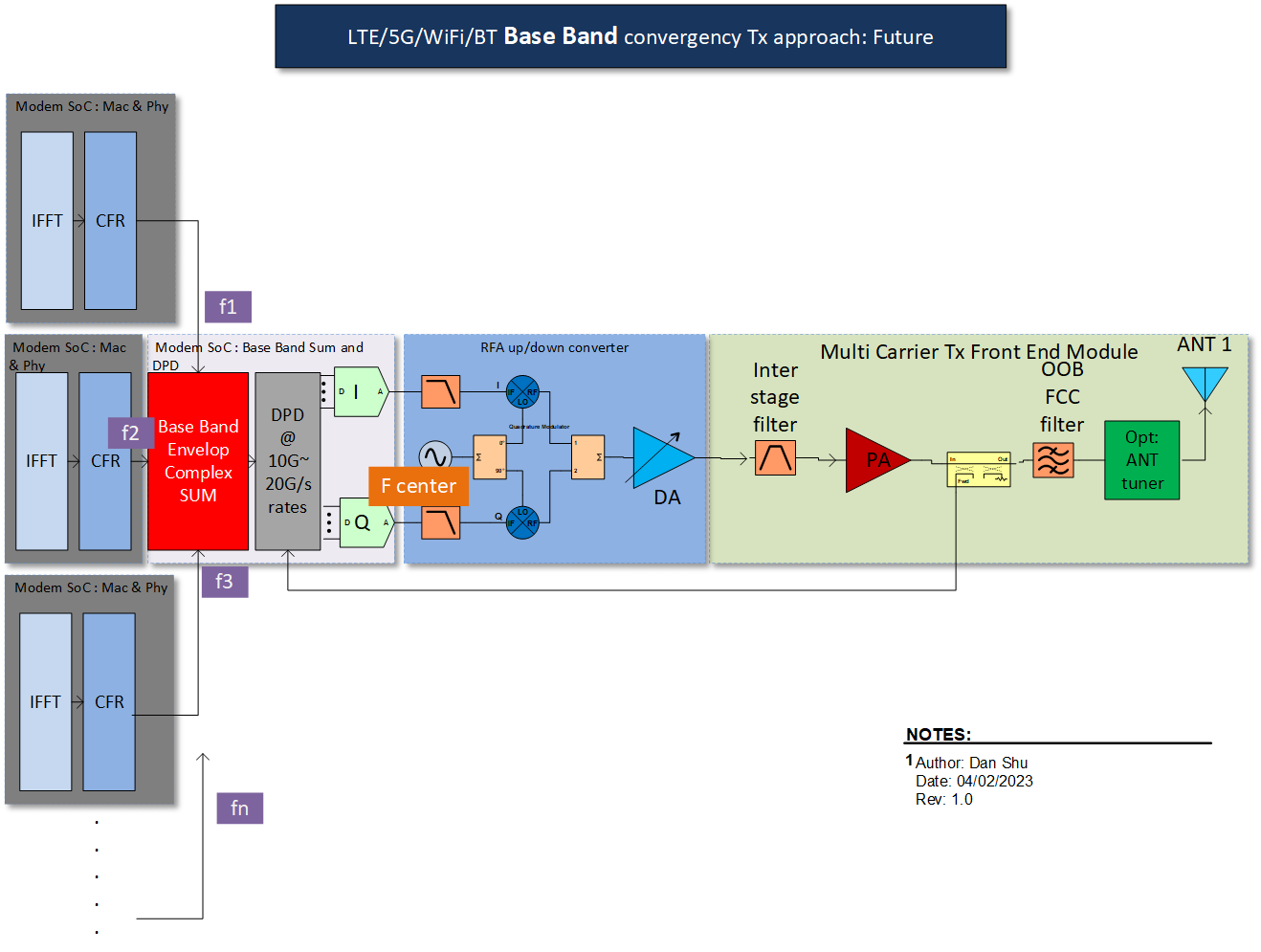RF Architect: Today, Tomorrow, and Future
Published:
As the demand for mobile data continues to grow, wireless devices are becoming more complex, requiring increased bandwidth and faster data rates. To address these challenges, a multi-carrier transmitter (Tx) architecture is emerging as a promising solution for future mobile wireless devices. This architecture allows for more power efficiency PA design, more efficient use of the available spectrum, enabling higher data rates and better signal quality. In this blog, we will introduce the multi-carrier Tx architecture and discuss its potential benefits for future wireless devices.
1. Today’s designs only share a few designs among channels. Each RF signal has its dedicated hardware from lower layer PHY (PMD), including baseband, RFA, PA/LNA, filters, switches, and antennas, among others. When the total number of independent channels increases, the DC power consumption efficiency becomes low. Moreover, the complexity of PCB level tuning becomes much more difficult with an increasing number of RF chains.
 pic1 Single Channel Tx/Rx example for today’s RF design
pic1 Single Channel Tx/Rx example for today’s RF design
2. The Tx Architect of tomorrow aims to save approximately 40% of power consumption compared to today’s designs, resulting in a significant improvement in PCB level complexity and BOM cost. This improvement is mainly due to the removal of the post-PA complex RF switch/filter/n-plexer insertion loss (2.5~3dB).
 pic2 Multi Channel Tx tomorrow’s RF design
pic2 Multi Channel Tx tomorrow’s RF design
3. In the next 10 years, the Universal Tx Architect aims to sum the baseband (simulation of which can be done today on Matlab or SystemVue) of all the post-CFR data streams, after which the whole DPD function is applied to the combined baseband signal. This design will require a sample rate of 10-20G/s with 18-19 bits A-to-D conversion. Power consumption of the A-to-D converter at 10G/s needs to be reduced to the equivalent level of today’s 1G/s design.
 pic3 Universal Tx Architect for future design
pic3 Universal Tx Architect for future design
========================
